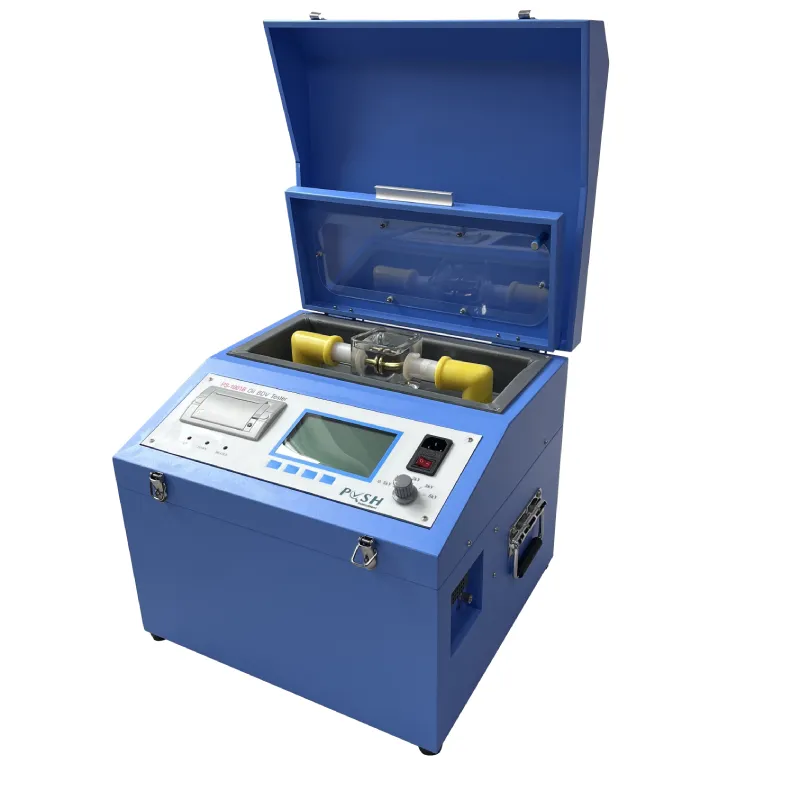 English
English


Switching Impulse Test Overview | Electrical Engineering Solutions
Switching Impulse Test Understanding Its Significance in Electrical Engineering
The switching impulse test is a critical evaluation procedure used in the electrical engineering field, particularly for testing the insulation strength of electrical equipment and components. This test simulates the electrical stress that insulation materials may encounter during their operational lifetime, notably during switching events, which are often characterized by high voltage spikes. The significance of the switching impulse test lies in its ability to predict the reliability and longevity of electrical systems under operational conditions.
At its core, the switching impulse test involves applying a rapidly rising voltage, mimicking the conditions created when electrical devices are suddenly connected or disconnected within a circuit
. The test typically employs a high-voltage generator, capable of producing fast-rising impulse voltages that reach peaks of hundreds of kilovolts within microseconds. The waveform produced, often described by the standard abbreviated form of OMS (Operating Mode Switching), must conform to international standards for reproducibility and accuracy.One of the primary objectives of the switching impulse test is to assess the dielectric strength of insulation materials used in high-voltage equipment. Insulation systems are fundamental in ensuring the safe and efficient operation of electrical devices, such as transformers, switchgear, and cables. When these systems fail, it can lead to catastrophic equipment failures, safety hazards, and significant financial losses. By utilizing switching impulse testing, engineers can determine the insulation's ability to withstand voltage transients and prevent such failures.
switching impulse test

The test not only evaluates the insulation's initial strength but also provides insights into the aging effects that may affect long-term performance. Through repeated testing over the lifespan of equipment, any degradation in insulation properties can be identified, allowing for proactive maintenance and timely interventions. This is particularly critical in industries where unplanned outages can result in substantial operational downtime and safety risks.
The results of the switching impulse test are typically presented in the form of breakdown voltage levels, which indicate the maximum voltage at which the insulation remains intact. These measurements are crucial for manufacturers and operators, helping them to design systems that meet safety and performance standards. Moreover, they serve as invaluable data for research and development in materials science, leading to the advancement of more reliable and efficient insulation systems.
In conclusion, the switching impulse test is an indispensable tool in assessing the performance of electrical insulation under real-world conditions. It provides essential information that not only ensures the reliability of electrical components but also safeguards against unexpected failures. By understanding the implications of this test, engineers can make more informed decisions, contributing to the development of safer, more efficient electrical systems that meet the ever-increasing demands of modern technology. As we continue to advance in the field of electrical engineering, the importance of robust testing methodologies like the switching impulse test cannot be overstated, ensuring a reliable and secure electrical infrastructure for future generations.
-
Differences between open cup flash point tester and closed cup flash point testerNewsOct.31,2024
-
The Reliable Load Tap ChangerNewsOct.23,2024
-
The Essential Guide to Hipot TestersNewsOct.23,2024
-
The Digital Insulation TesterNewsOct.23,2024
-
The Best Earth Loop Impedance Tester for SaleNewsOct.23,2024
-
Tan Delta Tester--The Essential Tool for Electrical Insulation TestingNewsOct.23,2024





